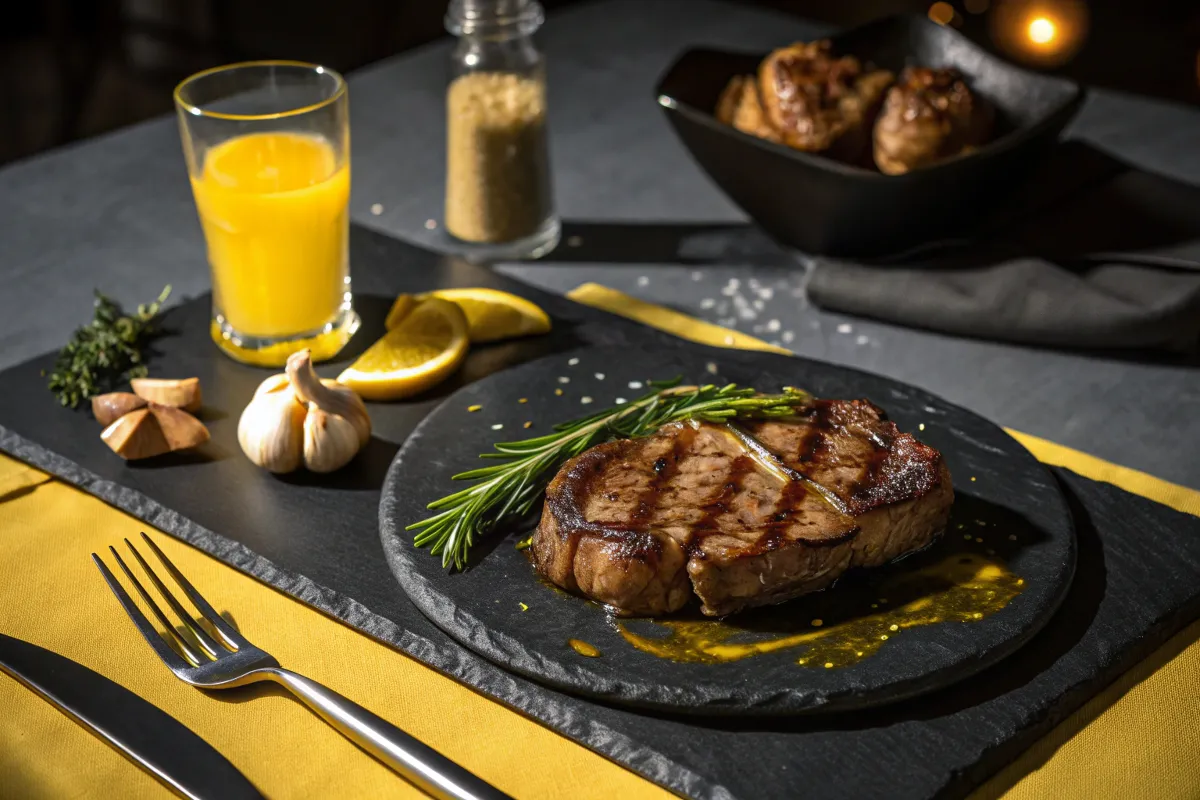Introduction : Which is better, Delmonico or Ribeye?
Which is better, Delmonico or Ribeye? This is a question steak lovers often debate. Both are classic cuts known for their rich flavor and tenderness. Choosing between them depends on personal taste, cooking style, and the occasion. Whether you’re planning a dinner party or just want to savor a delicious steak, understanding the differences between these two cuts can help you make the perfect choice.
In this article, we’ll explore the unique qualities of Delmonico and Ribeye steaks, including their origins, texture, and taste. We’ll also look at how to cook each cut to perfection. By the end, you’ll know exactly which steak suits your preferences.
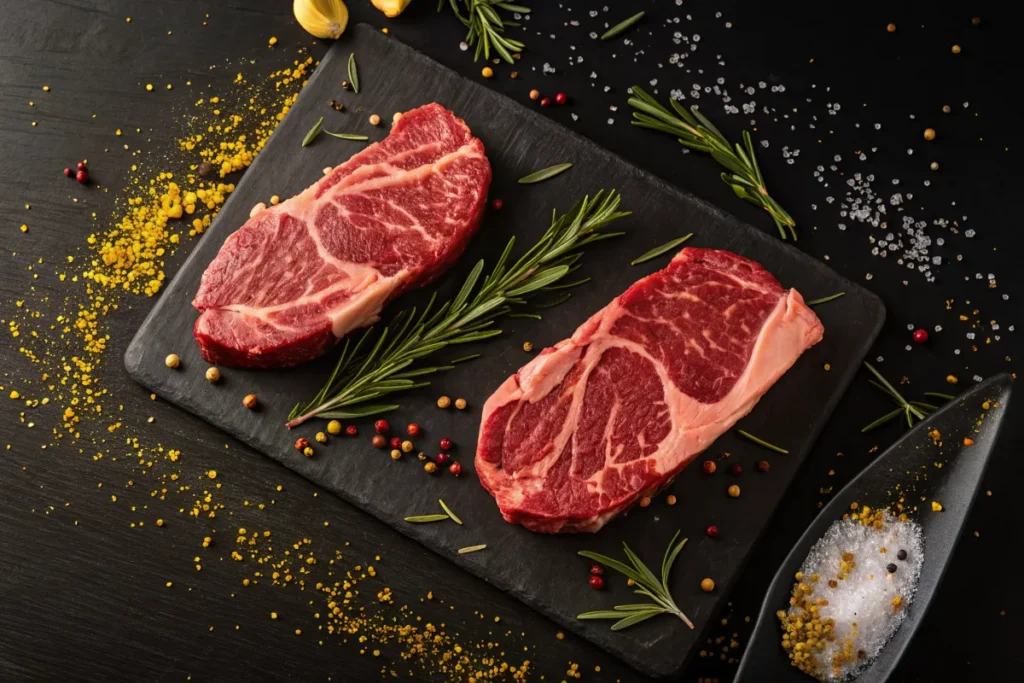
Table of contents
- Introduction : Which is better, Delmonico or Ribeye?
- Defining and Understanding Delmonico and Ribeye
- Using Delmonico and Ribeye in Everyday Life
- Key Concepts: Comparing Delmonico and Ribeye
- Explanation or Process: Choosing Between Delmonico and Ribeye
- Exploring the Unique Appeal of Delmonico and Ribeye
- Nutritional Comparison: Delmonico vs. Ribeye
- Frequently Asked Questions: Delmonico vs. Ribeye
- Conclusion: Which Is Better, Delmonico or Ribeye?
Defining and Understanding Delmonico and Ribeye
What Does “Delmonico” Mean?
The term “Delmonico steak” can sometimes be confusing. It doesn’t refer to a specific cut but rather to a style of steak that originated at Delmonico’s, a famous New York City restaurant in the 19th century. Interestingly, the exact cut can vary depending on the butcher or region. Usually, it’s a boneless steak, often taken from the chuck, rib, or short loin.
What sets the Delmonico apart is its bold flavor and hearty texture. While it may not have the same consistent marbling as a Ribeye, it makes up for it with a robust and satisfying bite. Because of its versatility, the Delmonico steak is an excellent choice for grilling or pan-searing.
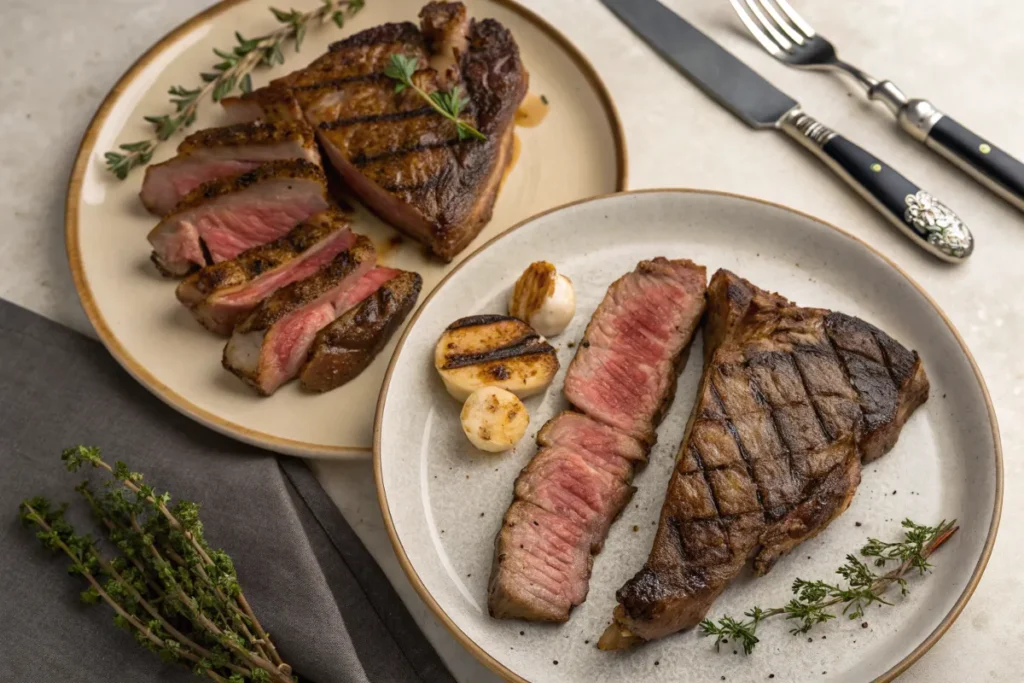
Why Is Ribeye So Popular?
On the other hand, Ribeye steaks are celebrated for their juicy, well-marbled texture. The fat content distributed throughout the meat makes this cut exceptionally tender and flavorful. In fact, the Ribeye is often considered the king of steaks for its richness and melt-in-your-mouth quality.
The Ribeye comes from the rib section of the cow, which is why it’s so tender and flavorful. Moreover, it’s a perfect steak for grilling, searing, or even roasting. The marbling ensures it remains juicy, even when cooked to medium or well-done.
Why Compare Delmonico and Ribeye?
When it comes to steak, choosing between cuts often comes down to what you’re looking for in taste and texture. Delmonico offers a bold, chewy experience, while Ribeye provides luxurious, buttery richness. Both cuts are excellent for different reasons, making this comparison worthwhile for any steak lover.
By understanding their differences, you can choose the steak that best matches your meal plans, cooking style, or even your mood. Additionally, knowing these distinctions can help you impress friends and family the next time you fire up the grill.
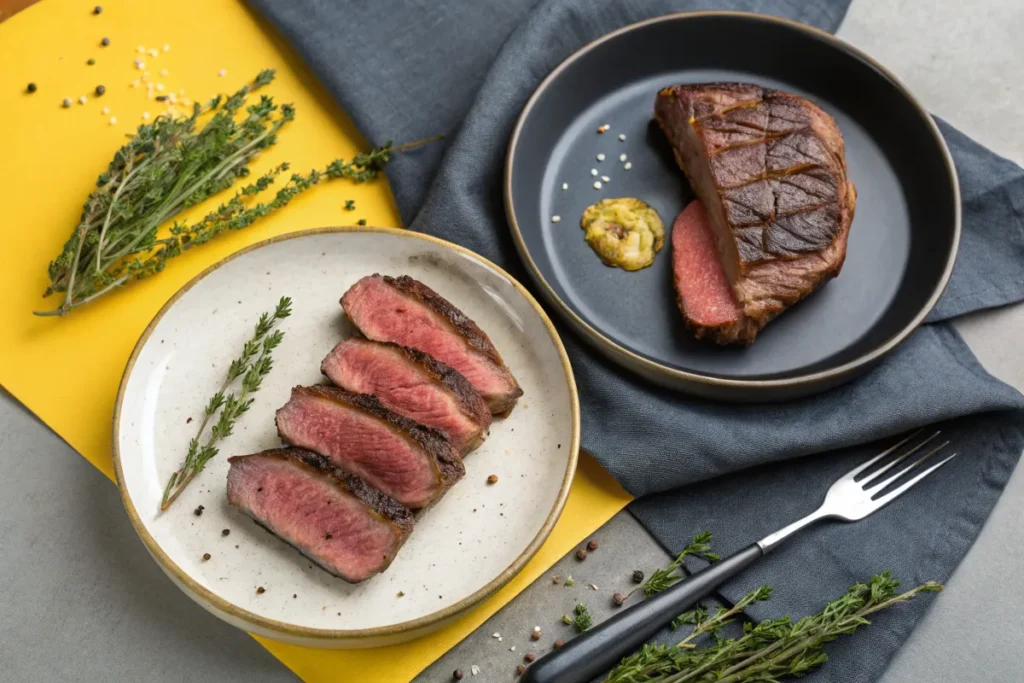
Using Delmonico and Ribeye in Everyday Life
Which Is Better, Delmonico or Ribeye for Home Cooking?
When cooking at home, it’s important to consider your equipment, time, and preferences. Delmonico steaks are versatile and relatively forgiving. They work well with marinades or bold seasonings, making them perfect for experimenting with flavors. Whether you’re grilling in the backyard or pan-searing in a skillet, a Delmonico steak can adapt to various methods with ease.
On the other hand, Ribeye steaks are a classic choice for at-home chefs looking to impress. Their rich marbling ensures they stay juicy even with simple seasoning. If you have a cast iron skillet or a grill, you can achieve a restaurant-quality Ribeye right in your kitchen.
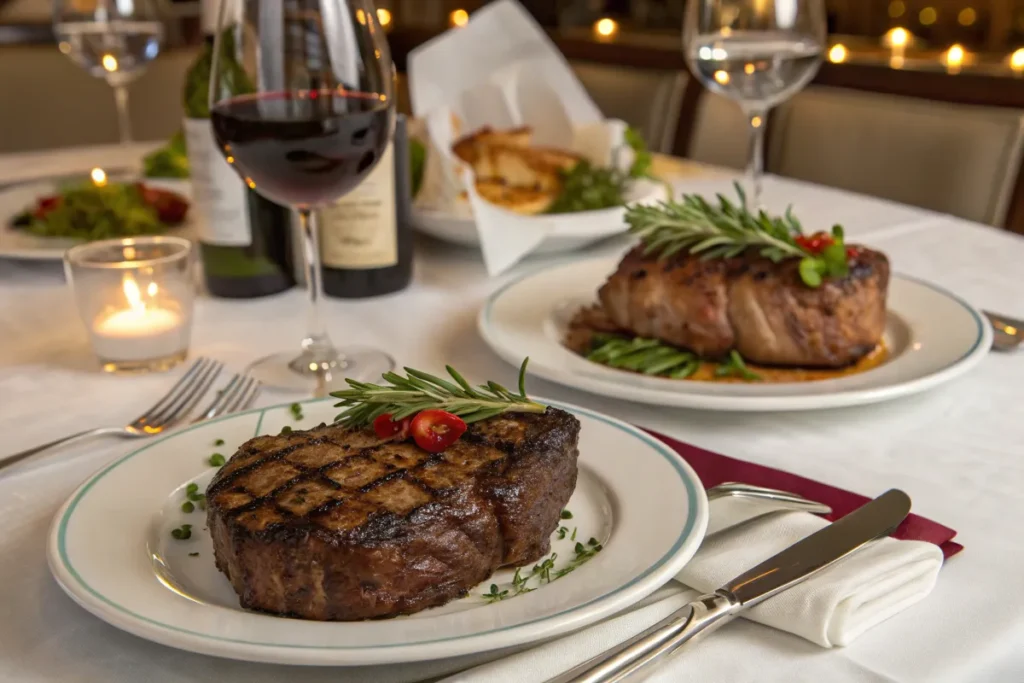
Special Occasions: Delmonico vs. Ribeye
If you’re hosting a special dinner, the choice between Delmonico and Ribeye can set the tone for your meal. A Delmonico steak is a hearty, flavorful option that pairs beautifully with rich sauces and bold side dishes. It’s an excellent choice for gatherings where variety and customization are key.
For more formal or indulgent occasions, Ribeye is often the star of the show. Its tender, juicy texture and luxurious flavor make it a crowd-pleaser. Pair it with a glass of red wine and simple sides like roasted vegetables or garlic mashed potatoes to let the steak shine.
Everyday Meals: Affordable and Delicious
For everyday meals, budget and availability often play a role. Delmonico steaks tend to be more affordable, especially when purchased from local butchers or grocery stores. They’re a great way to enjoy a quality steak without breaking the bank.
Ribeye steaks, while often pricier, can be a worthwhile splurge. If you’re craving an indulgent meal on a weeknight, a Ribeye steak can turn an ordinary dinner into something extraordinary.
Both cuts are versatile and can be incorporated into a wide range of dishes, from classic steak dinners to steak salads and sandwiches. By understanding the strengths of each, you can enjoy Delmonico and Ribeye in countless ways.
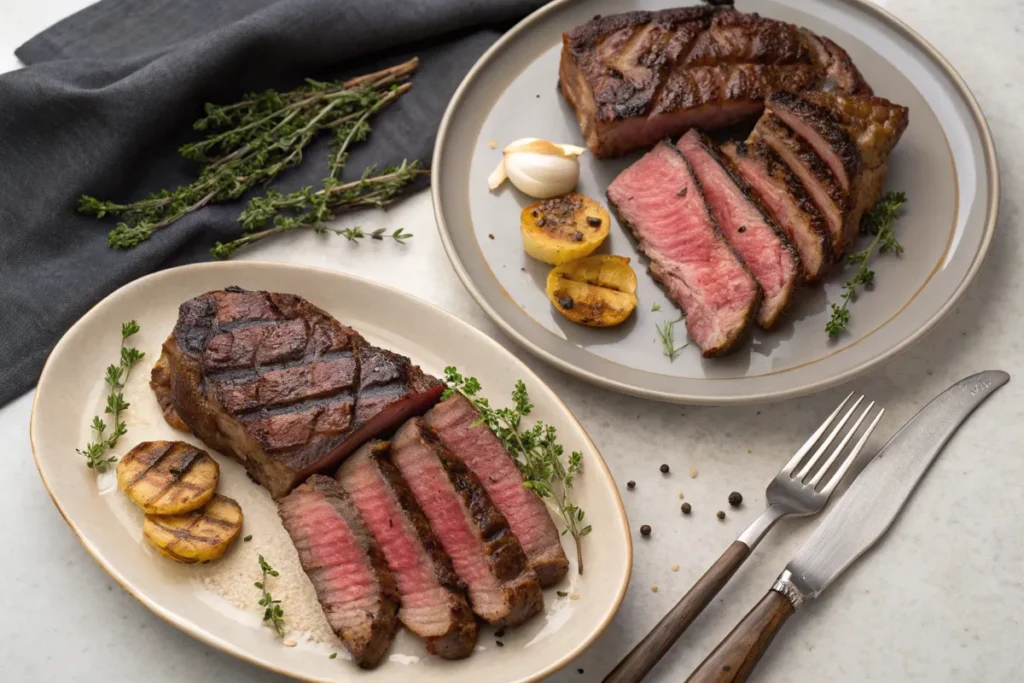
Key Concepts: Comparing Delmonico and Ribeye
Flavor Profile: Delmonico vs. Ribeye
When deciding which is better, Delmonico or Ribeye, the flavor is often the first thing to consider. The Delmonico steak is known for its hearty, beefy taste. Its flavor is bold and robust, making it a favorite for those who enjoy a rich, chewy steak. In contrast, the Ribeye delivers a more luxurious eating experience due to its marbling. The fat melts during cooking, infusing the meat with buttery richness that practically melts in your mouth.
If you prefer a steak with a bold, traditional flavor, the Delmonico may be your choice. However, if you’re seeking a tender, juicy steak with a rich, fatty taste, the Ribeye is hard to beat. Regardless of your preference, each cut offers a unique experience that satisfies steak lovers everywhere.
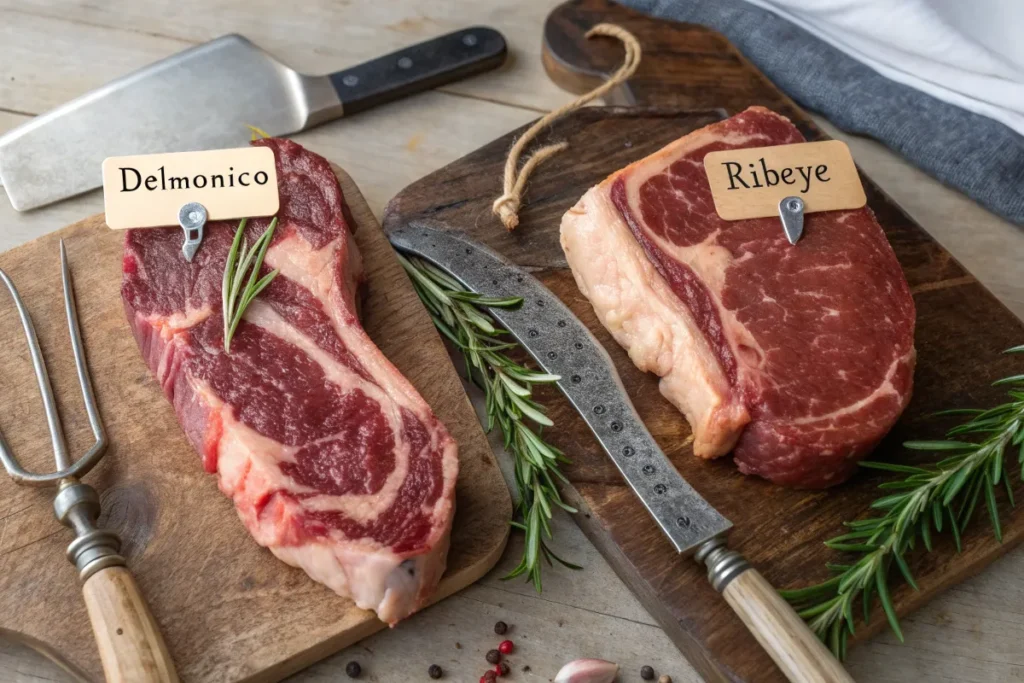
Texture and Marbling Differences
The texture of a steak can significantly impact your overall enjoyment. The Delmonico steak has a firmer texture, which many people find satisfying because it provides a hearty chew. This makes it ideal for those who like to savor each bite. The Ribeye, on the other hand, is famous for its tenderness. Thanks to its marbling, it has a melt-in-your-mouth quality that sets it apart from most other cuts.
In addition, the marbling in Ribeye steaks contributes to their juiciness. The fat melts as the steak cooks, which ensures every bite is flavorful. Delmonico steaks may not have as much marbling, but their unique texture offers a delightful contrast that appeals to those who prefer a less fatty cut.
Cooking Methods for Each Cut
When preparing these steaks, the cooking method plays a huge role in enhancing their natural qualities. Delmonico steaks are versatile and can be cooked in many ways, such as grilling, broiling, or pan-searing. To emphasize their bold flavor, you can use marinades or dry rubs with strong spices.
Ribeye steaks are best cooked with methods that allow the marbling to shine. Grilling or pan-searing at high heat creates a perfect crust while keeping the inside tender and juicy. Because the Ribeye has so much natural flavor, it doesn’t need much seasoning—just a bit of salt and pepper can go a long way.
By carefully selecting the right cooking method, you can bring out the best in each cut. Whether you’re preparing a Delmonico or a Ribeye, experimenting with cooking styles can help you discover your perfect steak experience.
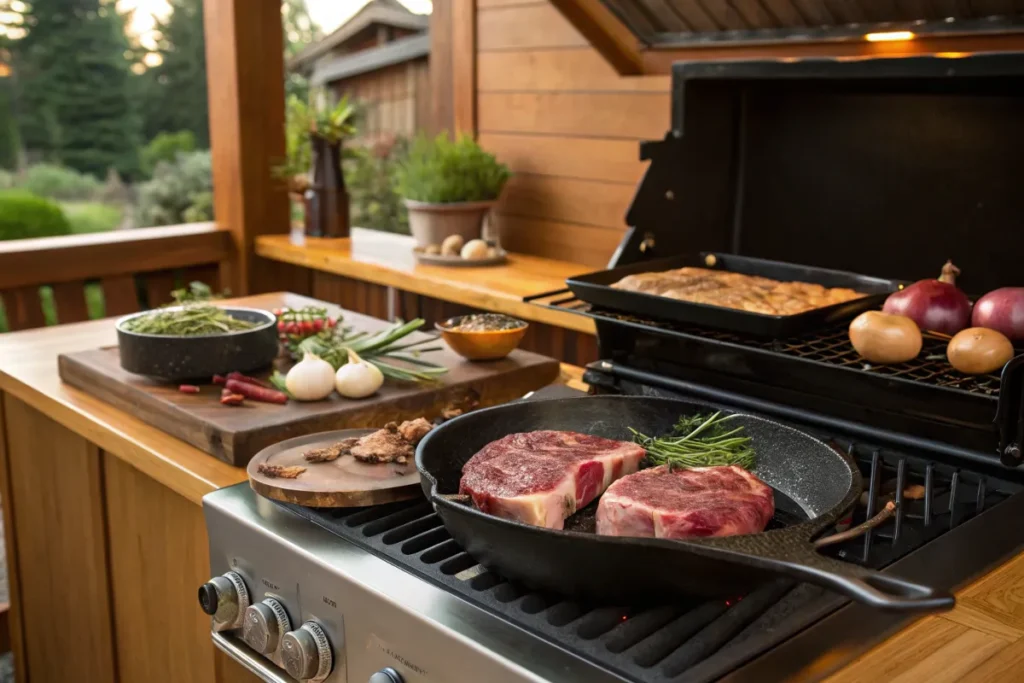
Nutrition: Which Is the Healthier Option?
When comparing which is better, Delmonico or Ribeye, nutrition is another factor to consider. Ribeye steaks are higher in fat due to their marbling, which makes them more calorie-dense. While this fat contributes to their flavor and tenderness, it may not be the best choice for those watching their calorie intake.
Delmonico steaks, on the other hand, tend to be leaner. This makes them a slightly healthier option if you’re looking to reduce your fat intake. However, both cuts are excellent sources of protein and essential nutrients like iron and zinc, making them nutritious choices in moderation.
In the end, the choice between Delmonico and Ribeye depends on your taste preferences, cooking style, and dietary needs. By understanding these differences, you can enjoy the perfect steak every time.
Explanation or Process: Choosing Between Delmonico and Ribeye
Step-by-Step Comparison: How to Decide
When choosing which is better, Delmonico or Ribeye, it helps to break it down into clear factors. Let’s compare them side by side:
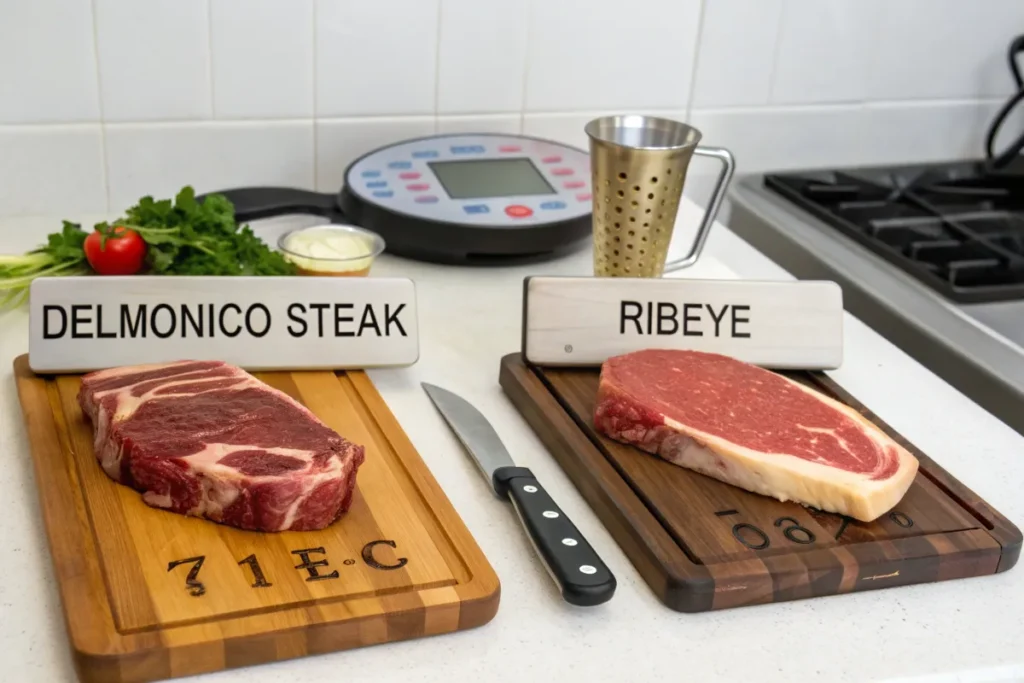
| Factor | Delmonico | Ribeye |
|---|---|---|
| Flavor | Bold, beefy, hearty | Rich, buttery, luxurious |
| Texture | Firm, satisfying chew | Tender, melt-in-your-mouth |
| Marbling | Moderate to low | High, evenly distributed |
| Best Cooking Methods | Grilling, pan-searing, broiling | Grilling, pan-searing, roasting |
| Fat Content | Leaner than Ribeye | Higher fat content |
| Ideal For | Those who prefer bold, traditional steak | Fans of juicy, tender, and rich steaks |
| Nutritional Value | Slightly fewer calories, leaner option | Higher calorie content due to marbling |
This table highlights the key differences to help you choose the steak that best fits your preferences and needs.
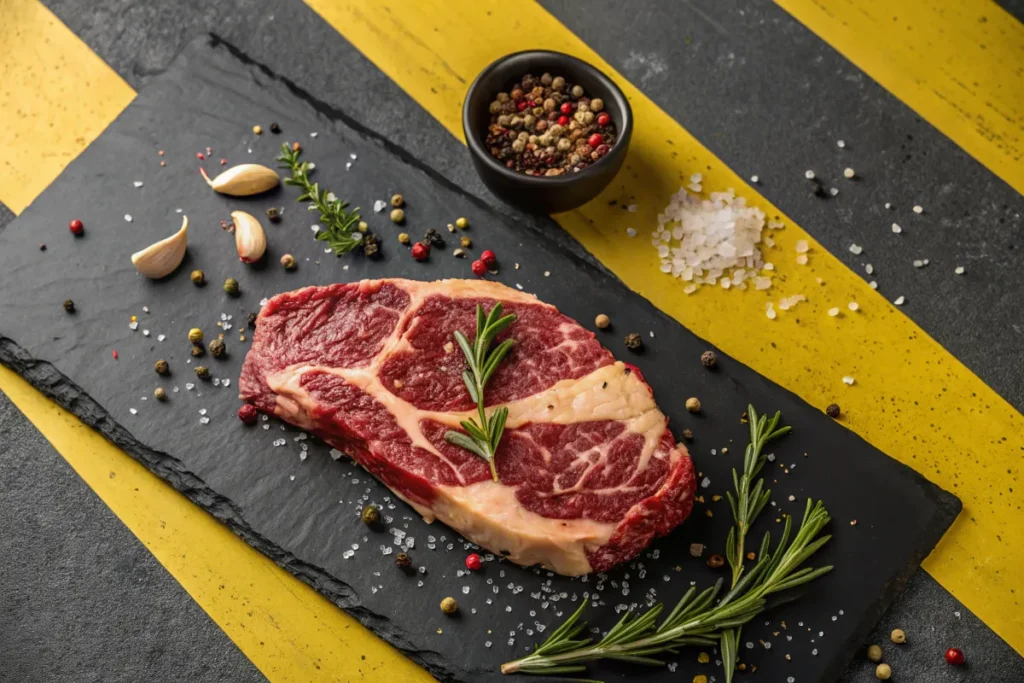
Tips for Cooking the Perfect Steak
- Choose Quality Meat: Whether you go for Delmonico or Ribeye, selecting high-quality, fresh meat is crucial. Look for steaks with a bright color and avoid those with excessive liquid in the packaging.
- Season Generously: A good steak needs only salt and pepper to enhance its natural flavor. For Delmonico, consider adding spices to complement its bold taste.
- Use High Heat: Both Delmonico and Ribeye benefit from high-heat cooking methods. This creates a flavorful crust while sealing in the juices.
- Monitor Temperature: Use a meat thermometer to ensure your steak is cooked to your preferred doneness. For medium-rare, aim for an internal temperature of 130°F (54°C).
- Rest Before Serving: Always let your steak rest for 5-10 minutes after cooking. This step allows the juices to redistribute, ensuring every bite is tender and juicy.
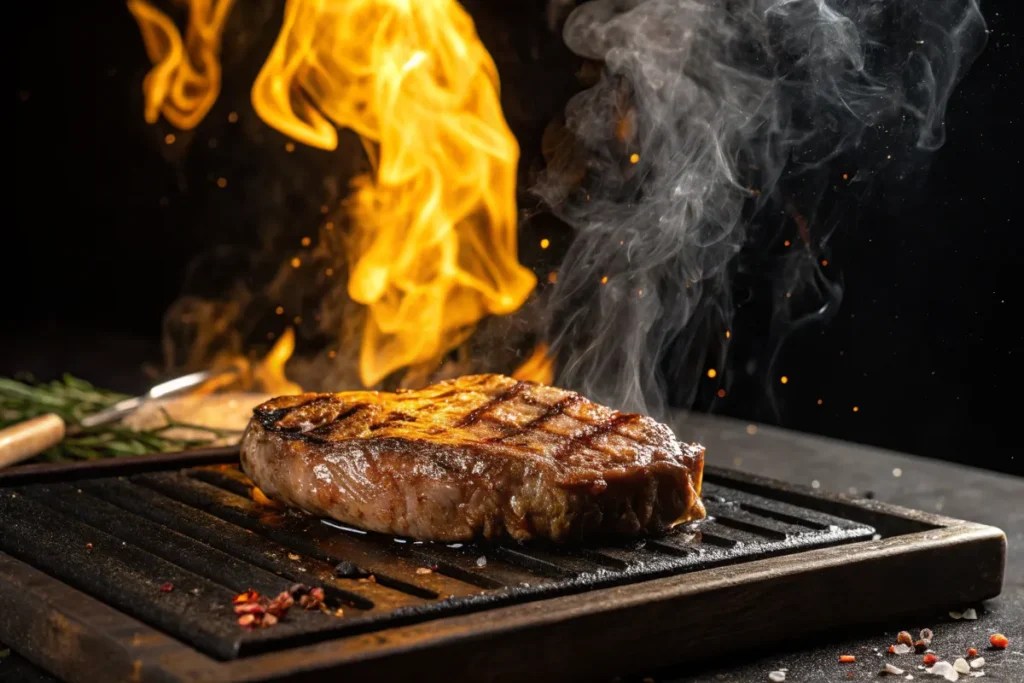
Exploring the Unique Appeal of Delmonico and Ribeye
Why Steak Lovers Can’t Stop Debating
The question, “Which is better, Delmonico or Ribeye?” sparks endless debate among steak enthusiasts. Both cuts bring something special to the table, but their differences are what make the conversation so compelling.
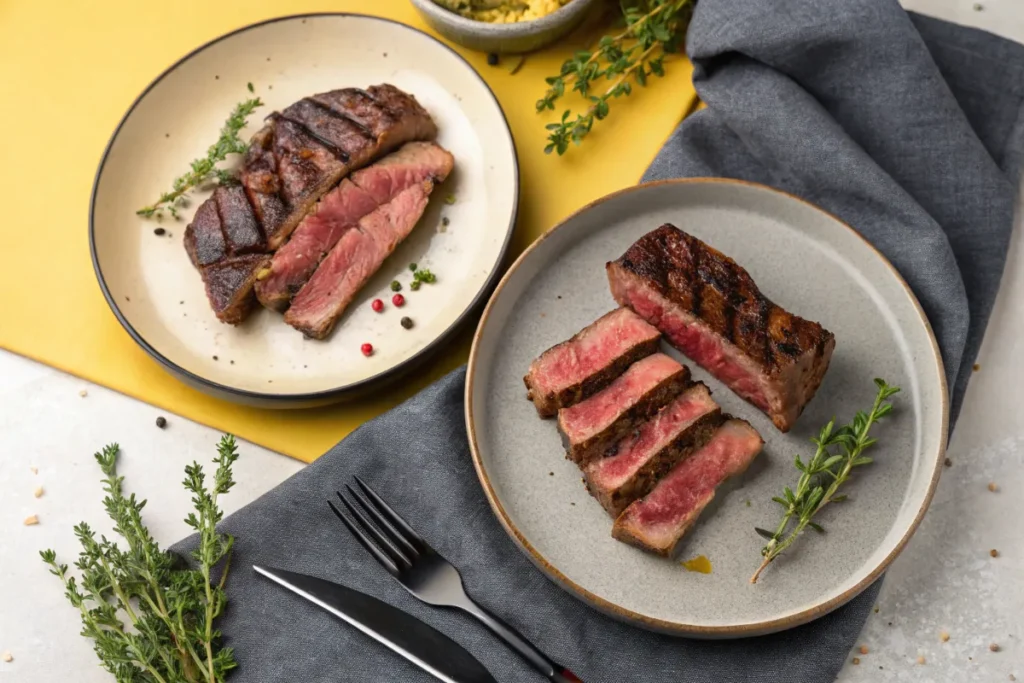
“Delmonico is for those who crave bold, beefy flavors, while Ribeye offers a luxurious, melt-in-your-mouth experience.”
What Chefs Say About Delmonico and Ribeye
Top chefs have long praised these cuts for their versatility and distinct characteristics. Delmonico steaks are often celebrated for their ability to hold up to robust seasonings and marinades. Chefs frequently recommend this cut for recipes that demand bold flavors and hearty textures.
On the other hand, Ribeye is lauded for its perfect marbling and natural juiciness. Chefs agree that the Ribeye’s luxurious texture requires minimal seasoning to shine.
“If you’re looking for indulgence, go for Ribeye. For a classic steak experience, Delmonico is the way to go,” says Chef Maria Hernandez, a steakhouse expert.
The Experience of Eating Each Cut
Eating a Delmonico steak is an adventure for your taste buds. The firm texture and rich flavor provide a satisfying chew, making every bite feel substantial. It’s the kind of steak you’ll want to savor slowly, pairing it with bold red wine or a creamy peppercorn sauce.
In contrast, Ribeye offers an entirely different experience. With every bite, you’ll taste the buttery richness that comes from its marbled fat. It’s the steak equivalent of indulgence, perfect for a night when you want to treat yourself.
“Choosing between Delmonico and Ribeye is like choosing between adventure and luxury—you can’t go wrong with either!”
By understanding these unique qualities, you can better appreciate what makes Delmonico and Ribeye steaks beloved by so many. Whether you’re planning a casual meal or a special occasion, both cuts promise an unforgettable experience.
Nutritional Comparison: Delmonico vs. Ribeye
Calorie and Fat Content
When deciding which is better, Delmonico or Ribeye, nutrition can be a significant factor. Ribeye is well-known for its marbling, which contributes to its rich, buttery flavor but also increases its fat and calorie content. A typical 3-ounce serving of Ribeye contains around 240 calories and 18 grams of fat, with a higher proportion of saturated fats.
Delmonico, on the other hand, is often leaner depending on the cut used. The same 3-ounce serving of Delmonico steak typically has 180-200 calories and 10-12 grams of fat, making it a better choice for those monitoring their fat intake.
Pro Tip: If you’re looking to reduce fat, trimming visible fat from the edges of either cut can make a noticeable difference.
Protein Content
Both Delmonico and Ribeye are excellent sources of high-quality protein, which is essential for building and repairing muscles. A 3-ounce serving of Ribeye offers around 22 grams of protein, while Delmonico provides approximately 25 grams. This slight edge makes Delmonico a slightly better option for those prioritizing protein in their diet.
Vitamins and Minerals
Both steaks are rich in essential nutrients such as:
- Iron: Vital for red blood cell production and energy levels.
- Zinc: Supports immune function and wound healing.
- B Vitamins (especially B12): Important for brain health and energy metabolism.
However, Ribeye’s higher fat content means it may contain more fat-soluble vitamins like vitamin E, while Delmonico’s leanness often makes it a better choice for those focusing on heart health.
Which Cut Is Healthier?
If you’re aiming for a lower-calorie, leaner option, Delmonico might be the better choice. Its lower fat content makes it more heart-friendly while still providing robust flavor. On the other hand, if you’re less concerned about fat and calories and want a more indulgent meal, Ribeye delivers unmatched tenderness and richness.
Ultimately, both cuts can fit into a healthy diet when enjoyed in moderation. Pairing them with nutrient-dense sides, like leafy greens or roasted vegetables, is a great way to create a balanced meal.
Frequently Asked Questions: Delmonico vs. Ribeye
It depends on your taste preferences. If you enjoy a bold, beefy flavor with a firmer texture, Delmonico might be your choice. However, if you prefer a rich, buttery, and tender steak, Ribeye is hard to beat.
Generally, Delmonico steaks are more affordable, especially since they can come from various parts of the cow. Ribeye, with its consistent marbling and tenderness, is usually pricier.
Most Delmonico steaks are boneless, but the specific cut can vary depending on the butcher. It’s a term that doesn’t refer to a single defined cut, so always check with your supplier.
Delmonico is generally leaner and lower in calories, making it a slightly healthier option. Ribeye, while richer in flavor, has more fat and calories due to its marbling.
Ribeye’s popularity and higher fat content, which adds to its luxurious taste, make it more expensive. Delmonico steaks are often more affordable because the cut can vary and is less standardized.
Both cuts work well for grilling, but Ribeye is often favored because its marbling keeps it juicy. Delmonico, being leaner, benefits from careful cooking to prevent dryness.
Ribeye is often the go-to for special occasions due to its richness and tenderness. However, Delmonico’s bold flavor and versatility make it an excellent choice for casual or formal meals alike.
Conclusion: Which Is Better, Delmonico or Ribeye?
Deciding between Delmonico and Ribeye depends on your preferences and how you plan to enjoy your steak. For those who love bold, beefy flavors and a hearty texture, the Delmonico steak offers versatility and value. Its adaptability to various cooking methods makes it an excellent choice for any meal. To learn more about this cut and its origins, check out Is Delmonico a Good Cut of Steak?.
If you crave luxurious tenderness and a rich, buttery flavor, Ribeye is the way to go. Its marbling ensures a juicy, flavorful steak every time, whether you grill it or cook it on the stovetop.
Both options bring unique qualities to the table. You can elevate your meal further by exploring how professional techniques can transform meat, like in these guides on how restaurants make ribs so tender or choosing between oven or grill for ribs.
In the end, both cuts are excellent options, and choosing one over the other will depend on the occasion, your taste preferences, and your cooking style. Whichever you choose, pairing it with delicious recipes like this arm roast recipe or learning techniques like cooking an arm roast like a brisket can help create a memorable dining experience.
Enjoy exploring the delicious world of steaks, and don’t hesitate to try both cuts to find your favorite!

